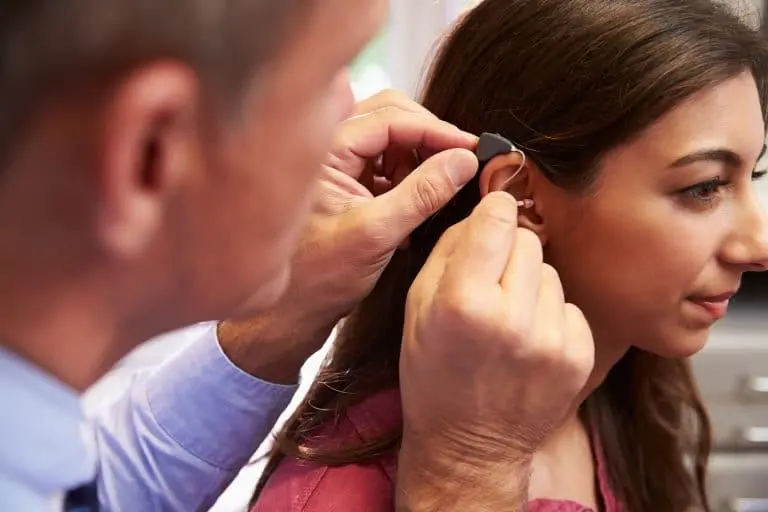Introduction
Hearing aids are vital devices for individuals with hearing impairment, helping them to stay connected to their surroundings and lead more fulfilling lives. However, with frequent use, hearing aids—especially the domes—can sometimes lead to ear irritation or minor infections, prompting users to wonder, “Can I use Neosporin in my hearing aid domes?” While Neosporin is a popular antibiotic ointment used to prevent and treat infections on the skin, it’s not typically recommended for use in hearing aid domes. In this guide, we’ll explain why Neosporin is generally unsuitable for this purpose, explore safer alternatives, and offer comprehensive care tips for both your hearing aids and ear health.
What Are Hearing Aid Domes and Why Are They Important?
Hearing aid domes are small, soft, dome-shaped covers that sit within the ear canal, helping direct amplified sounds into the ear while keeping the hearing aid comfortably in place. Domes are an essential part of behind-the-ear (BTE) hearing aids and receiver-in-canal (RIC) hearing aids, providing a stable and comfortable fit. Proper maintenance and care of these domes are crucial, as they come in direct contact with the ear canal, which is sensitive and prone to irritation if neglected.
If you’ve experienced minor discomfort, itching, or sensitivity due to wearing hearing aid domes, it may be tempting to apply Neosporin for relief. However, it’s essential to understand both the advantages and potential risks of using any topical treatment on or near your hearing aids.
Can I Use Neosporin in My Hearing Aid Domes?

To put it simply, using Neosporin in hearing aid domes is not recommended. Here’s a closer look at why:
1. Risk of Damage to Hearing Aid Components
Hearing aids are advanced electronic devices, and their components are highly sensitive to moisture, oils, and chemicals. Neosporin is a thick, greasy ointment with an oil base, which can seep into the inner parts of the hearing aid, causing potential damage or even leading to malfunction. Neosporin can clog small vents and openings in the dome, affecting sound quality and reducing the device’s effectiveness.
2. Impact on Ear Health and Canal Balance
The ear canal is a delicate environment with its own natural balance of oils and bacteria that help protect the ear. Applying Neosporin inside the ear or on hearing aid domes can disrupt this balance, leading to further irritation or even an allergic reaction. Since the ointment isn’t formulated for internal ear use, it may have side effects that can worsen ear health, especially with frequent use.
3. Slippage and Discomfort
The greasy nature of Neosporin can make the domes slippery, affecting their snug fit in the ear. This can lead to discomfort, especially if the hearing aid dome begins to slip out or move around while you’re wearing it. Improper fit can also decrease sound quality and make it more challenging for the hearing aid to function as intended.
4. Increased Risk of Antibiotic Resistance
Neosporin contains antibiotics, which, when used incorrectly or frequently, can contribute to bacterial resistance. Overuse of antibiotic ointments can make bacteria resistant to treatment, potentially complicating future infections in the ear. It’s important to use antibiotics only as directed by healthcare professionals to prevent resistance.
Alternatives to Using Neosporin in Hearing Aid Domes
If you’re experiencing irritation or minor infections related to your hearing aids, there are safer and more effective alternatives than using Neosporin:
1. Specialized Ear Lubricating Drops
Ear lubricating drops are specifically designed for sensitive ear skin. They can provide a soothing effect, reduce irritation, and moisturize the ear canal without risking damage to your hearing aids. Look for products formulated for ear health, ideally free of antibiotics unless prescribed by a doctor.
2. Antiseptic Hearing Aid Wipes
Antiseptic wipes designed for hearing aids can be used to clean the domes and the outer parts of the hearing aid, reducing bacterial buildup and maintaining hygiene. These wipes are usually alcohol-free and will not interfere with the electronics of the device. They can be a valuable addition to your regular hearing aid cleaning routine.
3. Mild Steroid or Allergy Creams (Consult Your Doctor)
If the irritation is due to an allergic reaction or inflammation, consult your doctor, who may prescribe a low-dose steroid cream suitable for external use. Apply this only as directed and avoid direct contact with your hearing aids. Steroid creams can help reduce inflammation without the added risks associated with Neosporin.
4. Routine Cleaning and Maintenance
Regular cleaning of your hearing aid domes is essential for preventing ear infections and irritation. Accumulated earwax, dirt, and debris can make wearing hearing aids uncomfortable. Use a designated hearing aid cleaning tool or follow your device manufacturer’s instructions to keep your domes clean and free of buildup.
5. Consult an Audiologist or ENT Specialist
If discomfort persists, it’s best to consult a healthcare professional. An audiologist or ENT specialist can diagnose underlying issues, offer appropriate treatments, and guide you on safe methods for using hearing aids without causing irritation.
Frequently Asked Questions (FAQs) About Hearing Aid Care and Neosporin

1. Can I apply Neosporin around my ear instead of in the dome?
If you have an external cut or irritation around the outer ear, Neosporin may be safe to use, but only on the skin away from the ear canal. Keep in mind that any ointment near your ear should be applied sparingly, as excess can transfer onto your hearing aid domes and potentially interfere with the device.
2. Are there any over-the-counter products specifically for ear irritation?
Yes, many over-the-counter ear drops and sprays are designed to soothe ear irritation. Look for products labeled as safe for ear use, particularly for sensitive skin. Always check with your audiologist if you’re uncertain about a product’s compatibility with your hearing aids.
3. How often should I clean my hearing aid domes?
It’s generally recommended to clean your hearing aid domes daily, especially if you wear them for extended periods. Regular cleaning reduces the risk of ear infections and extends the lifespan of the device. Use a soft, dry cloth or a specialized hearing aid cleaning tool.
4. What should I do if my hearing aid domes still cause discomfort?
If your hearing aid domes cause persistent discomfort, consider consulting your audiologist. You may need a different dome size, material, or style for a better fit. Custom-molded domes are also available, which can provide increased comfort for long-term use.
Additional Tips for Hearing Aid and Ear Health
Following these tips can help you maintain both your ear health and the functionality of your hearing aids without the need for Neosporin.
1. Choose the Right Size and Type of Dome
Hearing aid domes come in different sizes and materials, so selecting the right one for your ear shape and sensitivity level can prevent irritation. Your audiologist can help you choose the best option.
2. Avoid Using Oil-Based Products
Oil-based products, including many skin creams and ointments, should be kept away from your hearing aids. Oils can clog the domes, reduce sound clarity, and damage the internal components over time.
3. Establish a Consistent Cleaning Routine
A consistent routine ensures that your hearing aids stay in optimal condition. In addition to daily cleaning, consider investing in a hearing aid dehumidifier, which can help remove moisture that may accumulate from daily wear.
4. Visit Your Audiologist Regularly
Regular check-ups with your audiologist can help you stay on top of any issues with your hearing aids. They can also assess your ear health and make recommendations if you experience discomfort or other issues.
Common Misconceptions About Hearing Aid Care and Ear Health
1. “Neosporin is harmless since it’s used for skin injuries.”
While Neosporin is indeed beneficial for minor cuts and scrapes, it isn’t formulated for use inside the ear canal or with hearing aids. The ear canal and hearing aids require special care that skin ointments like Neosporin cannot provide safely.
2. “All ear drops are safe to use with hearing aids.”
Not all ear drops are compatible with hearing aids, especially if they’re oil-based or contain ingredients that may interfere with the domes. Always consult a healthcare professional before using new products in your ears while wearing hearing aids.
3. “If there’s no discomfort, I don’t need to clean my hearing aids often.”
Even if you’re not experiencing discomfort, regular cleaning is essential for optimal hearing aid performance and to prevent potential infections. Accumulated earwax and debris can reduce sound quality and increase the risk of irritation over time.
Conclusion
In answer to the question, “Can I use Neosporin in my hearing aid domes?” the best advice is to avoid it. Hearing aids are designed to function with clean, unaltered domes, and introducing products like Neosporin can create issues with both the devices and your ear health. Instead, opt for safer, hearing-aid-friendly solutions such as specialized ear drops, antiseptic wipes, and regular cleaning to maintain comfort and hygiene.
By following these tips and consulting with an audiologist when necessary, you can enjoy both improved hearing and comfort without the risks associated with using non-recommended products like Neosporin in your hearing aid domes.
